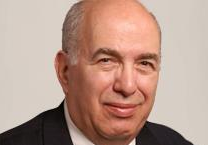Proving Investment Selection Processes

The purpose of this post is to examine two opposite selection processes, (1) Picking winners and (2) Avoiding losers; as well as to discuss the provability of these or any selection processes before-hand.
Picking only winners
A number of selectors of mutual fund portfolios and some newsletter writers look to near-term performance. In at least one popular case the published pundits select funds with the best available one year performance regardless of investment objective. Under their ministrations the subscriber or account holder will continue to own the fund for a year. At the end of the year the underperforming funds will be replaced with the current year’s best performers. This is a momentum approach adapted from the individual stock world to the portfolios of tax-paying mutual fund holders. Early in a long cycle the momentum approach can produce good returns. Often it has the benefit of producing spectacular results near the top of a highly speculative market. The descent from the peak however can be very painful in the first year of a decline.
Avoiding big losers
While desirous of gains, many of the clients that have chosen me to manage their investment fund oriented accounts are relatively risk averse. With that as a filter I turn to the databank now known as Lipper for Investment Management. (I no longer have any direct connection with my old firm, the producers of the data.) I particularly search for down quarters. Because the majority of the money I manage is in large institutional accounts or on behalf of very wealthy families, I restrict my search to funds with current assets of over $100 million. My accounts are expense-oriented, thus I seek to have total expense ratios below 1.26%.
Can you prove it?
I have been recently asked “What do you believe about investing, but know that you could never prove?” Before addressing whether I can prove that my approach of avoiding large losers rather than the approach that is momentum driven, I want to share some of my thoughts as to “proof” of investment decisions.
From my exposure being a Caltech Trustee and my vague memory of my physics classes at both Columbia University and the Staunton Military Academy, the discipline of the “scientific method” makes me question whether anything can be proven about investments before the final trade is tabulated. The basis of the scientific method is that anyone following the same procedures will get the same result. In physics there is no attention to the emotions of the experimenter or the fact that all conditions surrounding the experiment are known. As we don’t know why anyone buys or sells a security, we don’t know the critical motivation to the trade.
Instead of utilizing my academic exposures in getting comfortable with expectations of future results, I fall back on my two real sources of thinking: the racetrack and the US Marine Corps.
You can have it both ways
One of the nice elements of a portfolio of funds is, when appropriate, one can assemble a portfolio following a number of different approaches. This multi-approach portfolio could make sense for a portfolio that has different time horizons.
Which approach do you use?
September will find Ruth and me in London and Budapest. I would be happy to meet with any members of this blog community to share views, particularly from those who will help me learn.
If you liked this post, don’t forget to subscribe to Inside Investing via Email or RSS.
All Rights Reserved.
Contact author for limited redistribution permission.

